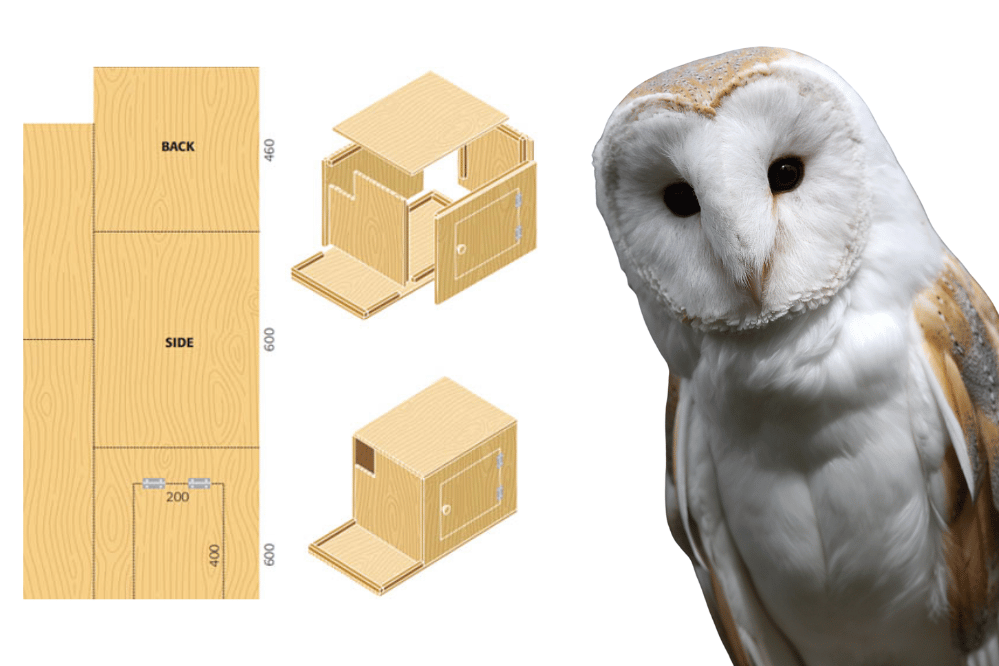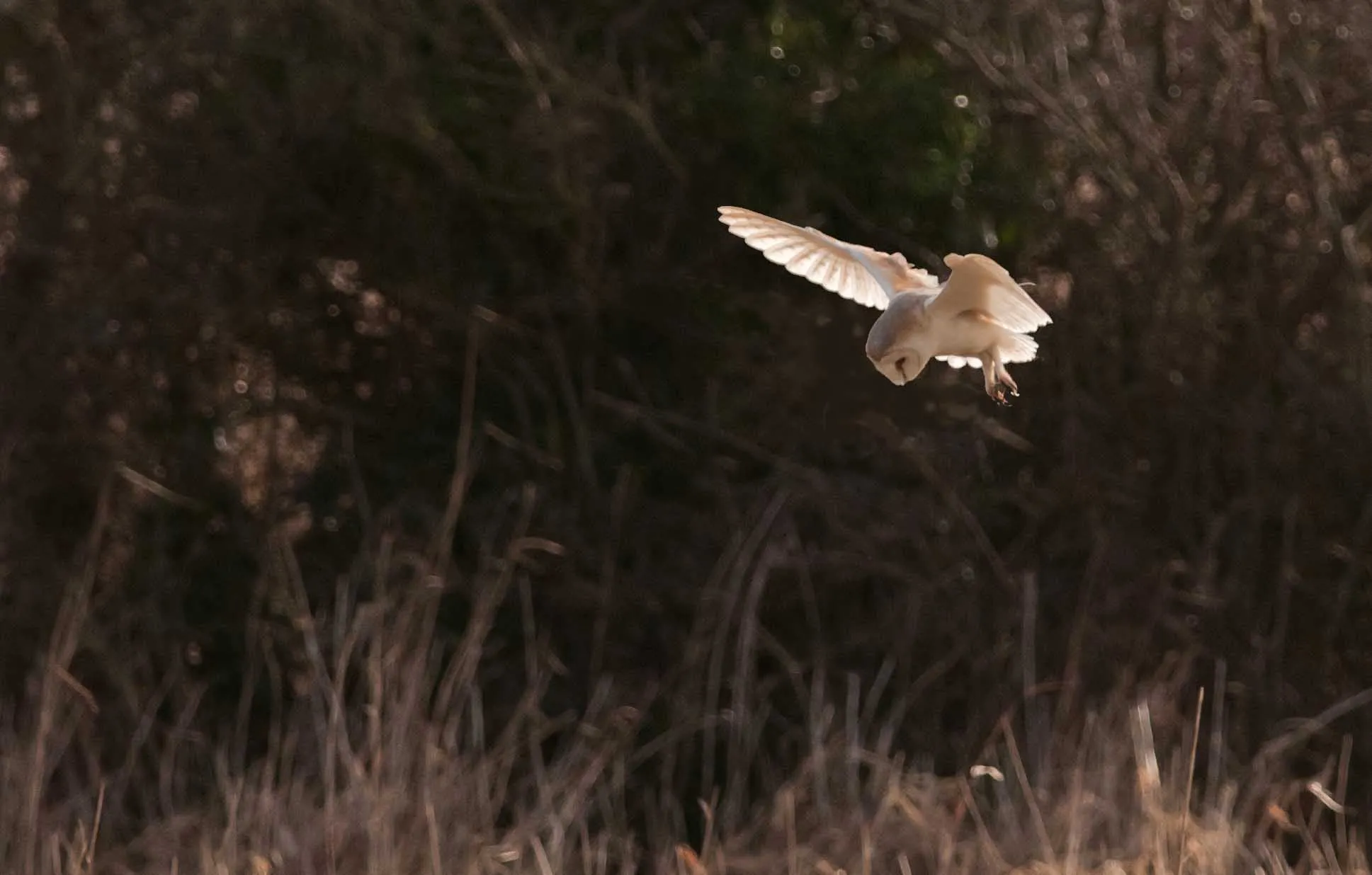Introducing Barn Owls
Scientific name: Tyota alba
- Breeds in open habitats, such as farmland.
- Resident and largely sedentary in habits.
- In excess of 4,000 breeding pairs.
- Green-listed Bird of Conservation Concern.
The Barn Owl is a species of open country, favouring lowland habitats such as farmland and young plantation woodland. Populations have recovered somewhat from an earlier period of decline and have benefited from the erection of nest boxes and appropriate habitat management.
Barn Owl is listed on Schedule One of the Wildlife & Countryside Act and so receives additional protection during the breeding season; a Schedule One licence is required to visit the nest of this species.

Calls and identification
The Barn Owl is not a particularly vocal species; the drawn-out screech of the male is only likely to be heard during the early stages of the breeding season.
Barn Owl chicks make a hissing call, sometimes referred to as ‘snoring’, when in the nest. This is used as a begging call and may be heard early in the evening when the chicks are waiting for one of their parents to make a feeding visit. The extent to which a chick calls provides an indication to its siblings of the individual’s willingness to compete for the next food item to be delivered.
Listen to a male Barn Owl call
Listen to a Barn Owl chick begging call
Pale in its general appearance, the Barn Owl is white beneath and has upperparts that are washed with golden buff.
Some individuals can look particularly ‘washed out’, while others are darker and have more strongly patterned plumage. Female Barn Owls are typically darker in their colouration than males and, additionally, have marked speckling on their flanks and underwing, which is rare in males. The dark-breasted race guttata, which occurs on the continent, may sometimes appear in Britain; such individuals are much darker in their appearance than our resident birds.
In flight, adult Barn Owls may be confused with Short-eared Owl, a species alongside which they may hunt, though the latter species has more strongly patterned plumage and piercing yellow eyes.
Ecology and conservation
Distributed widely across Britain and Ireland, the Barn Owl is limited by winter weather conditions and so is absent from upland areas and the most northerly regions. The species is most familiar as an owl of lowland farmland – both pastoral and arable – with peak densities occurring in East Anglia, Lincolnshire and Yorkshire. Within Ireland, the core breeding range is now centred on the south-west of the country. Favoured habitats contain areas of rough grassland and woodland edge, within which populations of Field Vole (the favoured prey) are sufficiently abundant. These habitats include the early successional stages of commercial plantation forests. In some areas, such as the arable landscapes of the Fens, secondary prey species like Wood Mouse become more important in the diet. The availability of small mammal prey shapes breeding behaviour; breeding may be delayed or not take place at all in those years when small mammal populations are at a low.
The Barn Owl is a cavity nester, favouring large cavities within mature hedgerow trees or the ledges found in old agricultural buildings. The species has adapted well to nest boxes, and it is likely that a significant proportion of the breeding population – probably well in excess of 25% - now uses them for breeding. Incubation begins with the first egg and, since consecutive eggs are laid at intervals of c.2 days, the resulting brood of chicks can vary in age by as much as two weeks. This strategy increases the chances of at least some chicks surviving if prey availability is low during the chick-rearing period; the oldest and largest chicks will receive food first, at the expense of the last to hatch.
The Barn Owl was certainly a far more common species at the beginning of the 20th century than it is today, but numbers have recovered from a low point evident during the 1970s and 1980s and may now exceed 10,000 breeding pairs. The last national survey, carried out between 1994 and 1997, but the population at c.4,000 breeding pairs. Though previously Amber listed through its loss of UK range, the species was moved to the UK Green list in 2015.
The efforts of volunteers have helped the species, with the erection of nest boxes replacing nesting opportunities that had been lost to the removal of hedgerow trees and the conversion of old farm buildings. Road mortality remains an important cause of death for young birds, particularly during the period of natal dispersal when they move away from where they were raised to establish a breeding territory of their own. Agricultural chemicals, including pesticide seed dressings and rodenticides, may have had an impact on Barn Owl populations, making ongoing monitoring an important priority. Work to provide suitable hunting habitat, and to tackle other potential causes of mortality, has also benefited the species.
Life history
- Clutch Size 4 – 6 eggs
- Incubation period 32 days
- Fledging age 53 – 61 days
- First clutch laid April – May
- Number of broods per year 1 – 2
- Age at first breeding 1 year
- Typical lifespan 4 years
- Maximum age from ringing 15 years 3 months 21 days (set in 2016)
Knowledge gaps and our work
The Breeding Bird Survey index is thought to be unreliable for Barn Owl but despite this the current status of the species is considered favourable. A repeat survey, using the Project Barn Owl methodology, would allow researchers to assess Barn Owl population trends using a randomised sample of study sites and help to validate the annual monitoring information coming in from other sources.
There is evidence of continued population decline within Ireland, with the greatest losses in the north and east evident from Bird Atlas data, which would suggest that a survey here would be valuable. There are opportunities to extend the collection of information on breeding ecology and breeding success, for example by increasing geographical coverage and collecting additional information on prey availability and local habitat. Increased monitoring of Barn Owl carcasses would provide additional information on background levels of agricultural chemicals and the identification of mortality causes.
BTO work
BTO has been working on Barn Owls over several decades, both through targeted studies and as part of wider projects, such as the Bird Atlases. The species was included in the work coordinated by Steve Percival and published in BTO Research Report 57, and was the focus of a targeted national survey ‘Project Barn Owl’ carried out between 1994 and 1997, the results of which provided the first robust estimate of national population size.
One of the recommendations to emerge from Project Barn Owl was for a national Barn Owl Monitoring Programme (BOMP), which then ran from 2000 until 2009. This provided valuable information on breeding success and underlined the value of using a standardised approach for collecting such data. BOMP provides a valuable model for the demographic work being developed through Project Owl for all of our breeding owl species. Specific BTO studies have examined the dispersal behaviour of Barn Owls (BTO Research Report 692), the effects of second-generation rodenticides (BTO Research Report 106) and the survival rates of captive-bred Barn Owls released under licence (BTO Research Report 250).
Barn Owl nest box design

This downloadable cutting plan is for a design that is fairly easy to construct and is for use indoors.
Barn Owl nest boxes are best placed within suitable farmland habitat, either in a suitable hedgerow tree or on a farm building. This design is specifically for use indoors.
- Download the Barn Owl nest box design
Barn Owl monitoring guide

Best practice guidelines for ringers and nest recorders participating in the BTO Ringing Scheme or Nest Recording Scheme.
If you are a bird ringer or nest recorder and have further fieldwork suggestions to make, contact our Ringing & Nest Recording Team at ringing@bto.org.
- Download the
